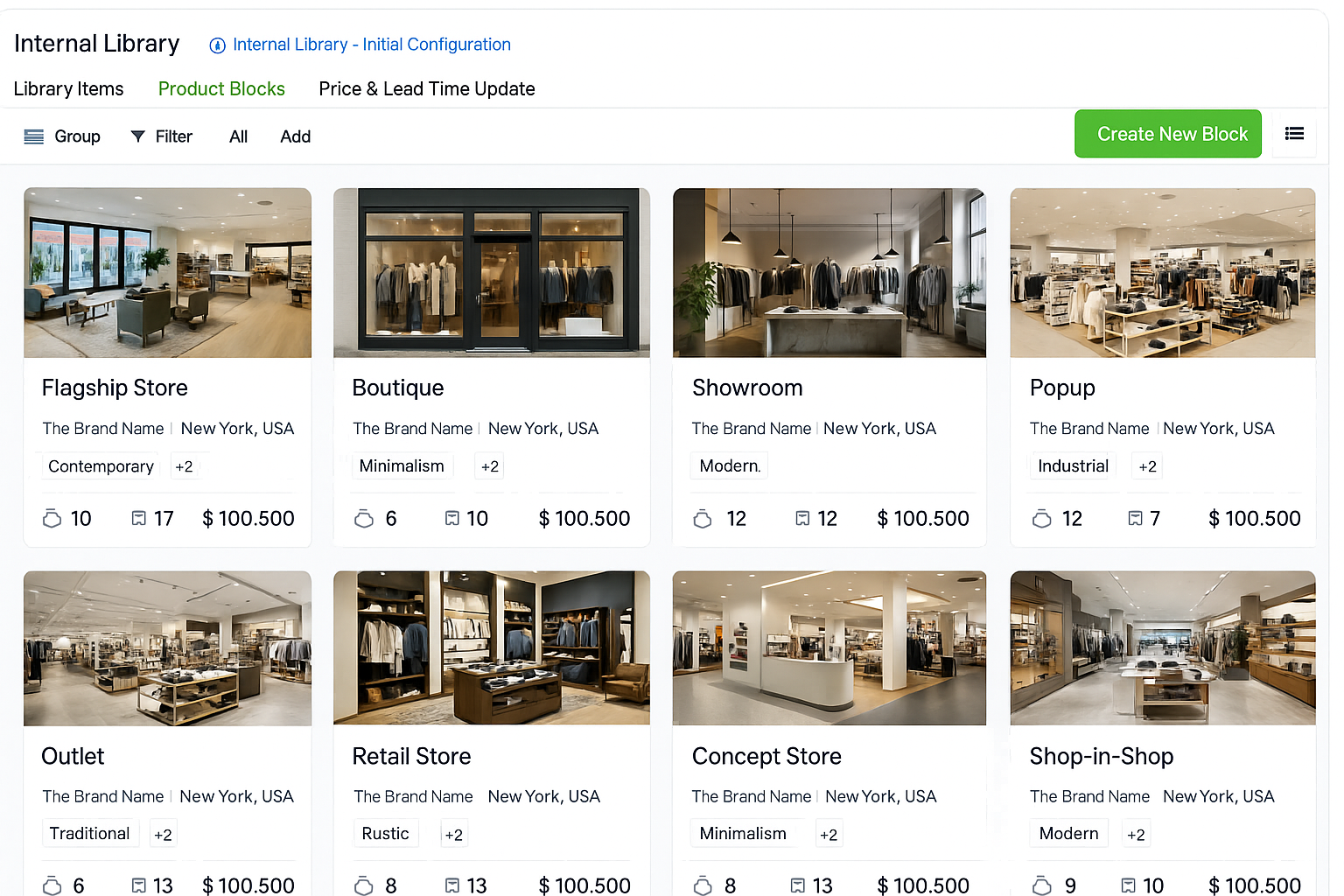Fohlio is a comprehensive specification and procurement tool that helps users take on larger projects. Empower teams to open stores faster and improve their operational workflow with specification, prototyping, estimating, and procuring tools.
You’re not just designing stores. You’re trying to scale a brand while swerving around spreadsheets, fielding sample requests at midnight, and digging through Dropbox like it’s an archaeological dig site.
And if you’ve ever thought, “I swear I just sent that Playbook PDF last week,” congratulations: You’re living the full retail space planning experience.
Vendors, regional project managers, and local architects love to ask, “Hey, is this on brand with the latest finish schedule?” Sometimes twice. Sometimes 10 times. Sometimes while you’re still on the email thread from last time.
Retail space planning teams know this pain: A spec standard changes, but the PDF doesn’t. And now you’re in a weird limbo where five teams are referencing five different versions of what they think is the standard. The result? Your global brand becomes a patchwork quilt of kind-of-close stores.
For retail space planning teams operating globally, consistency is non-negotiable but so is flexibility.
You’re trying to maintain a unified brand experience across regions that have different codes, materials, lead times, and teams. That’s why a digitized design playbook isn’t just a nice-to-have, it’s essential.
This guide is based on real-world conversations with retail space planning teams managing multiple rollouts, stakeholders, and design standards. It’s a roadmap for how to digitize your standards, streamline collaboration, and reduce the follow-ups, without compromising control.
The PDF Playbook That Broke Retail Space Planning
Let’s talk pain. It starts with a discontinued tile.
Then come the emails.
Then come the follow-ups.
Then someone uses the tile anyway because “it was in the PDF.”
Multiply that by 40+ stores, 7 regional teams, 15 architects and GCs, and one exhausted global design lead who’s just trying to eat lunch.
You know the drill. The PDF is always outdated before it lands in anyone’s inbox. Specs change. Lead times shift. Region A can’t use Product B because of Code C. And somehow, you’re the only person who knows that. Cool.
The truth is, static playbooks don’t work anymore. You need a system that evolves with your specs, not one that traps them in amber. 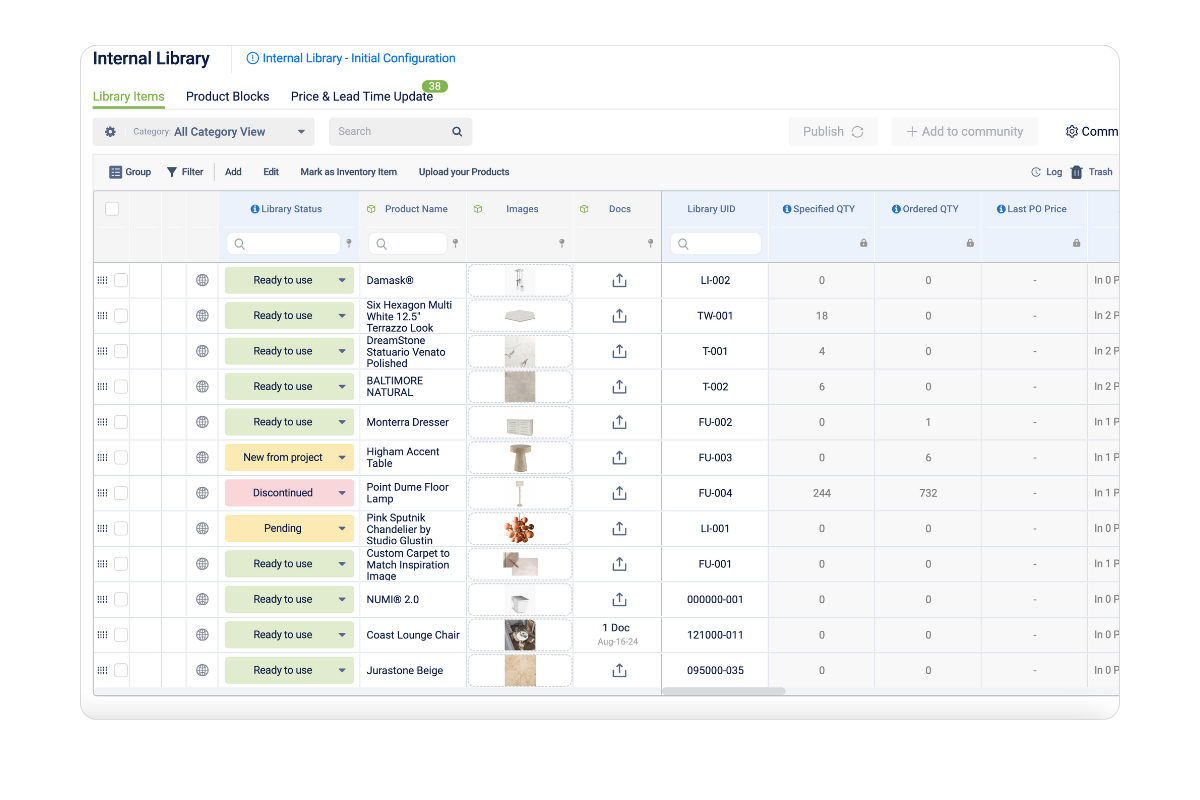
Fohlio's internal library let's you house all your approved specifications into one place with complete product details
Want to see how psychology plays a role in store experience too?
Start here with color psychology to see why this design mess affects more than just aesthetics.
What a Digitized Design Playbook Actually Looks Like
Let’s ditch the PDFs and build a living system.
A digitized design playbook isn’t just a prettier PDF. It’s a centralized, filterable library that evolves with your brand. Every approved material, fixture, finish, and piece of documentation lives here—organized by region, store typology, room type, or rollout wave.
Flagship? Kiosk? Outlet? Pop-up? Each one gets its own tailored view. No more Frankensteined PDFs taped together with hope and Post-its.
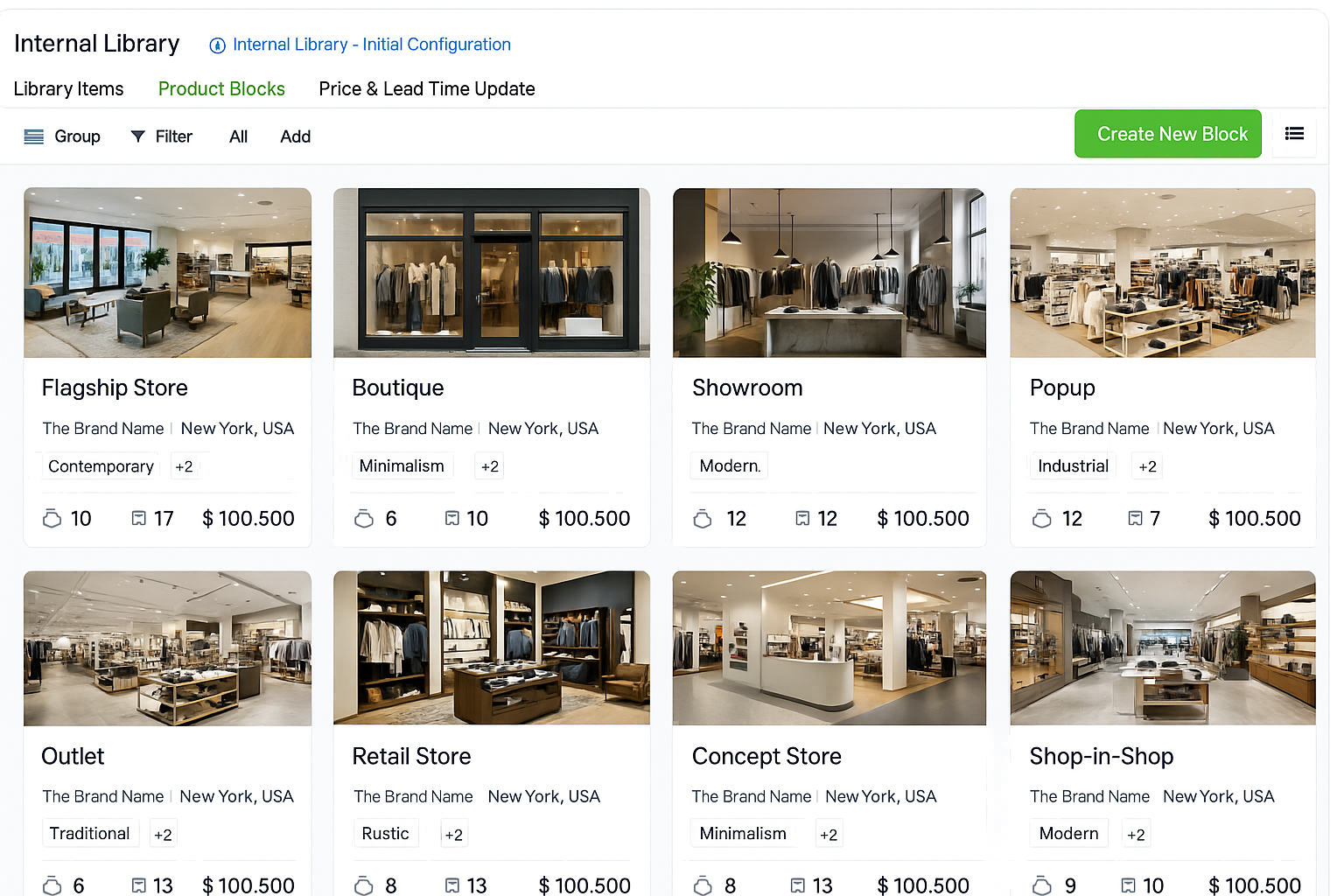
Product blocks lets you build sets of finishes per project type. Link each specification to suppliers and pricing for a complete view of each project block and easily replicate projects.
Every entry is dynamic and traceable. You know where it’s used, when it was last updated, and which projects depend on it. Sample requests don’t flood your inbox because they’re already in the system. Designers don’t repeat answers because the answers are built in. And yes, Revit materials sync both ways. Amen.
Here’s what you can do:
- Sort and filter by store format, region, project tier, room type, and more.
- Attach key assets like install guides, vendor quotes, and alternates to each material entry.
- Track usage across live projects and flag dependencies before making changes.
- Publish and version your design playbook with built-in change logs, release notes, and user alerts.
- Push updates as formal version packages like “Q4 Finishes Update,” with all impacted materials and documentation bundled in.
This isn’t documentation. It’s infrastructure. And it should move at the speed of your team.
Also: Here’s what a smart multi-location rollout looks like. Because a digital playbook is just one piece of the retail space planning puzzle.
Build Your Library Like It’s Your Brand’s Operating System
Start with your internal library: Every globally approved product gets uploaded, tagged, and versioned. Not just by room type or region—but with metadata like “Flagship Only,” “APAC Tier 2,” or “Discontinued Q3 2025.”
Now layer on access control. Your North America merchandiser doesn’t need to see APAC pricing. GCs don’t need vendor contracts. Everyone sees what they need, and nothing they don’t.
Oh, and the global design lead?
They no longer have to play Slack Ping Pong with 11 PM requests for PDFs. Regional PMs can search specs by store type and grab what they need—live, accurate, and up to date.
Keep Regional Teams Informed and Empowered
Change management shouldn’t rely on memory, spreadsheets, or late-night emails. A digitized playbook sends automatic alerts when specs change—whether that’s a discontinued finish, updated lead time, or revised compliance code. Users get notified in real time and can choose to accept or reject updates in their active projects.
At the same time, your global team shouldn’t spend half the week answering questions like “Where do I find the finish schedule?” or “Is this tile still active?”
Fohlio allows you to batch and name your updates with full transparency—"2025 Q4 Global Finishes Update," for example—so every change has context and rationale. Regional designers can self-serve: searching the library by room, product, or rollout tier to find exactly what they need. Even jobsite installers can scan QR codes to get up-to-date specs on the spot.
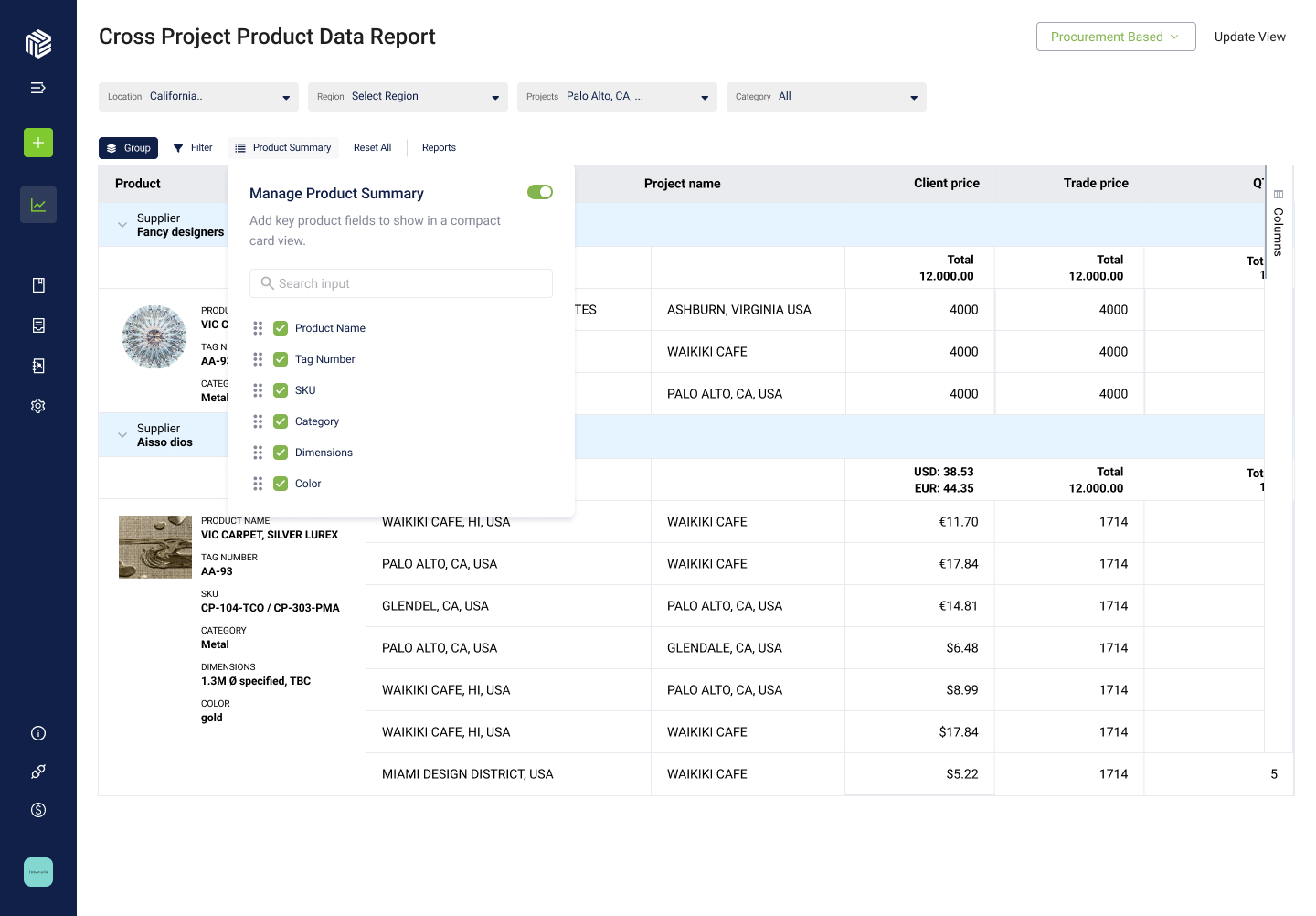
Cross project reports lets you filter and find any data you need: Filter by region, supplier, or store classification
- Automate notifications when a spec is discontinued, modified, or added.
- Let regional users accept or reject changes with clear audit trails and justifications.
- Batch and label updates for clarity and traceability.
- Let designers search by room, region, or store type—no more digging through Dropbox folders.
- Include a QR code generator for jobsite installation details that link to live spec data.
- Store reference photos, vendor brochures, and approval documents in a single click.
Still wondering why brick-and-mortar matters in a digital world? Here’s your reminder.
Design Dashboards for Each Team’s Workflow
Not everyone needs the same dashboard. Showing everyone everything creates noise. Tailor dashboards by role, geography, or workflow.
Procurement sees cost data and shipment timelines. Designers see finishes and alternates. Architects get read-only views of install specs.
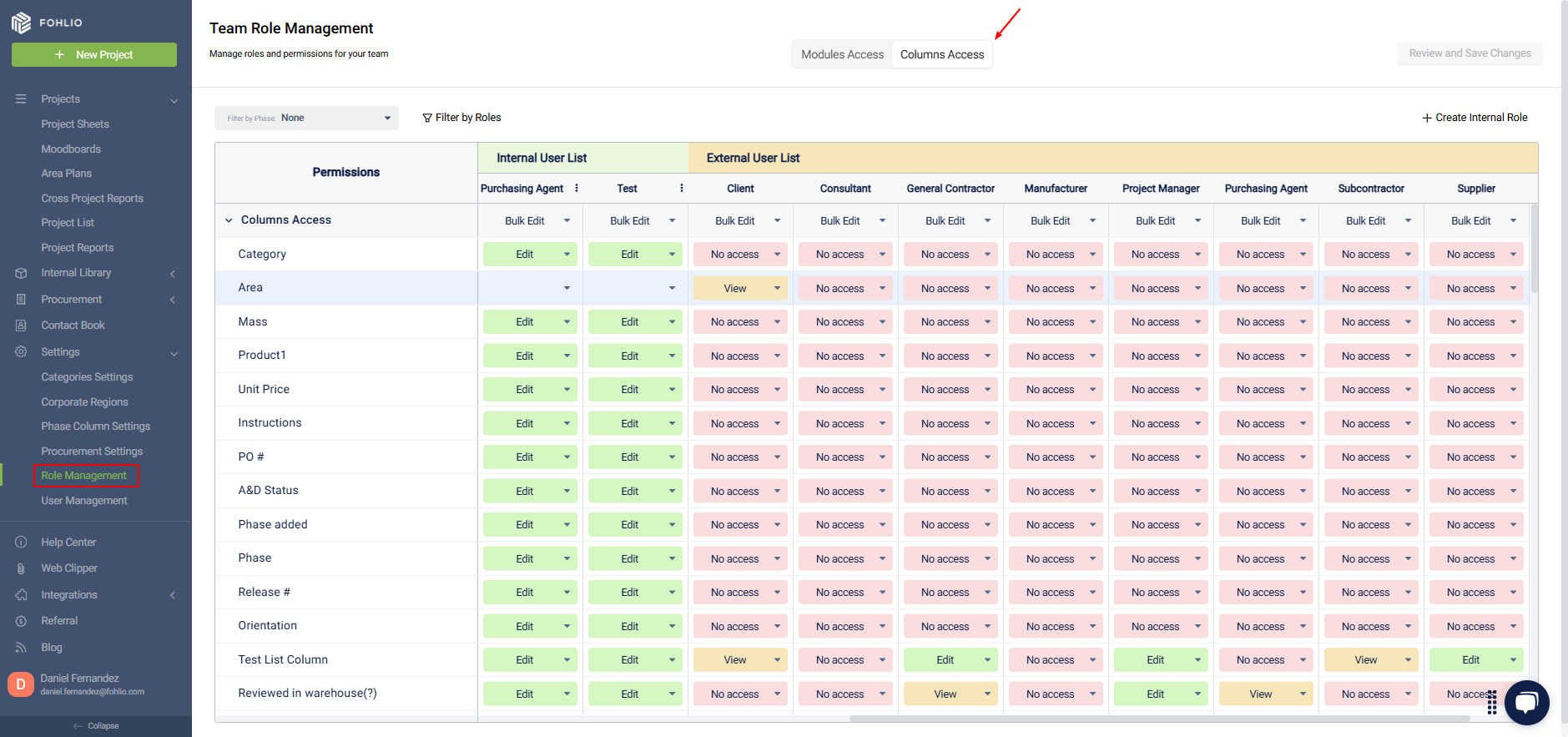
Fohlio’s role-based dashboards ensure everyone gets the right view:
- Build tailored views: Procurement sees pricing and lead times, Design sees finishes and alternates, Field Ops sees install docs.
- Customize dashboards by role, geography, or workflow to avoid noise and confusion.
- Turn spec sheets into interactive, editable records that update in real time—not static PDFs.
Approval workflows shouldn’t follow a rigid chain of command. In real-world global operations, approvals rarely move in perfect sequence.
Instead of bottlenecked reviews, Fohlio supports parallel tracks: Compliance, regional leads, and sourcing can all weigh in simultaneously—with full audit trails of who approved what, when, and why.
- Enable multi-track approvals to mirror real-life workflows.
- Use audit trails to track every approval, timestamped with rationale.
- Let each team—compliance, sourcing, regional—review through their own lens, without stepping on each other’s toes.
TL;DR
|
Old Way
|
New Way with Fohlio
|
|
Material libraries live in Excel files, PDFs, or someone's inbox
|
One centralized digital library with structured metadata and change tracking
|
|
Playbooks are emailed as static documents that are outdated on arrival
|
Versioned, living documents with real-time updates
|
|
Designers spend hours fielding repetitive questions from regional teams
|
Regional teams self-serve specs, install docs, and updates in one place
|
|
Sample requests flow through individual designers or Slack DMs
|
Controlled access to a global sample inventory that doesn’t depend on individuals
|
|
Regional teams risk using outdated specs with no easy way to verify
|
Specs lock when needed, push updates globally
|
|
Change management depends on memory and scattered spreadsheets
|
Automatic alerts, approval workflows, and detailed version history
|
|
Rollouts suffer from inconsistent branding and materials
|
Brand standards are always accessible, enforced, and up-to-date
|
Proactive, Not Reactive: The Retail Space Planning Mindset Shift
Most teams operate like firefighters. Something breaks, someone calls, and you scramble.
But when your specs, finishes, alternates, and approval logs are already live, you’re not reacting—you’re planning. You know what’s being used, where, and why. You’ve built the system once and now it works for you.
That’s what real retail space planning looks like:
- QR-code traceable specs
- Role-based dashboards
- Revit integrations that don’t break things
- Region-specific playbooks that don’t contradict themselves
Want to understand how this all shapes customer experience too?
This breakdown on experience-driven retail design is the next step in your evolution.
Fohlio is a comprehensive specification and procurement tool that helps users take on larger projects. Empower teams to open stores faster and improve their operational workflow with specification, prototyping, estimating, and procuring tools.
